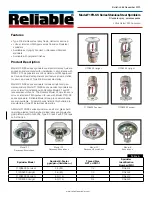
1 0 |
P a g e
Figure 5. Cartridge Removal
Step 9: Install the UV sensor (BLACKCOMB
6.1
systems only). Align the flat portion so it faces
the gland nut end and matches up with the half metal lip on the sensor port (see Figure 6). Insert
the sensor so it is fully seated and hand tighten the sensor nut. Insert the sensor connector into
the IEP port located on the right side of the controller (Figure 7). For the sensor to be recognized
by the controller, the controller power must be plugged in last. Do not plug the controller power
cord in before the last step.
Figure 6. UV Sensor Installation
Figure 7. IEP Connection
Step 10: The system is now ready for water flow. When all plumbing connections have been
completed, slowly turn on the water supply and check for leaks. Make sure the by-pass valves are
functioning properly and that the water is flowing through the system. The most common leak
is from the o-ring not making a proper seal on the reactor. For new installations, review steps 6
and 7. For older systems drain the reactor, remove the o-ring, dry it and reapply silicon grease.
Reinstall the o-ring ensuring that it is properly sealed against the reactor and check again for
leaks. To help vent the pressure from the system while the system is filling up with water, it is a
good idea to twist open the pressure relief valve located on the top of the filter head. Close the
valve once water appears at the port. If the system has two filters, perform this function on the
housing closest to the water inlet first and then on the next filter in sequence.
Step 11: Always hold UV lamps by their ceramic ends, not by the lamp quartz. Remove the lamp
from its packaging. Again, the use of cotton gloves is recommended. Remove the lamp key from
the lamp’s connector and set it aside for the next step. Be careful to not touch the key’s exposed
contacts. Insert the UV lamp into the reactor, being careful not to drop it.










































